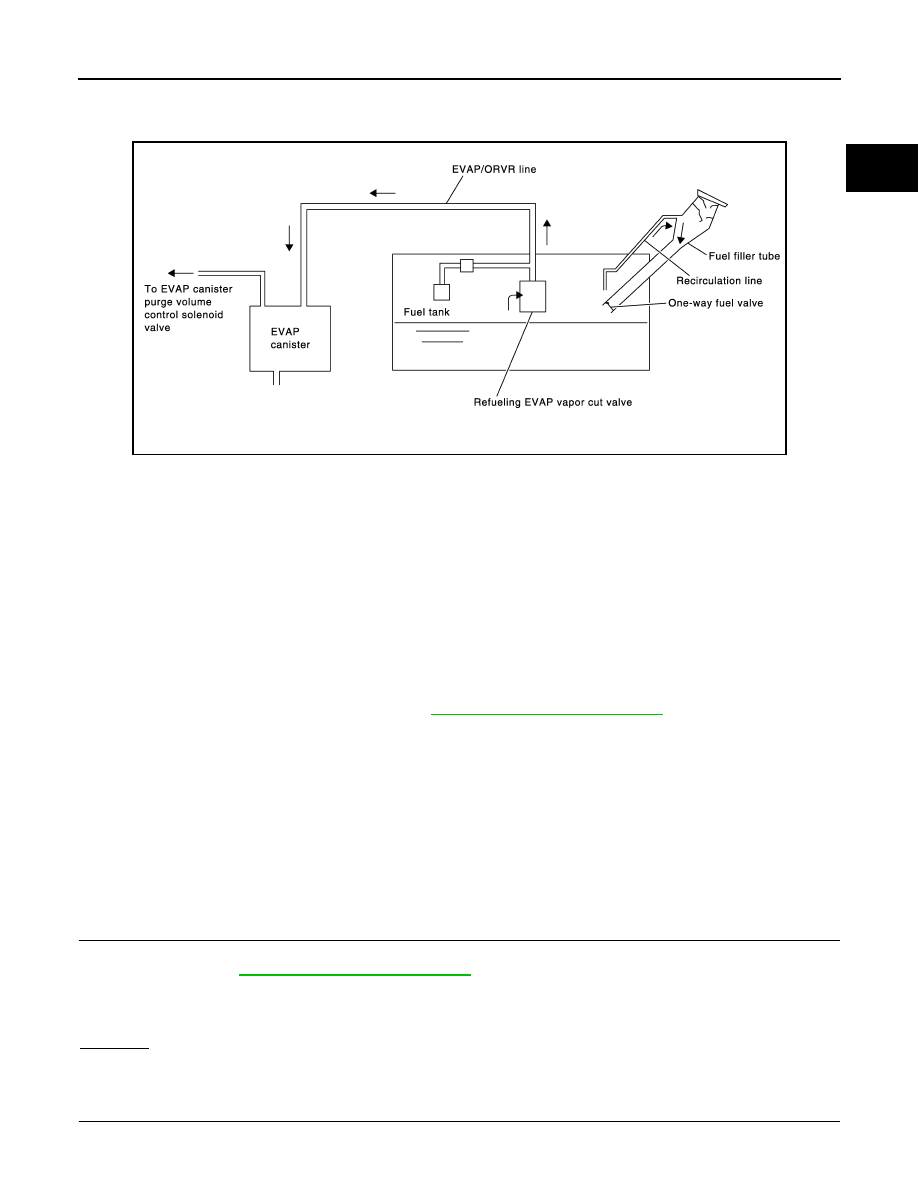Nissan Pathfinder (2012 year). Manual - part 357

ON BOARD REFUELING VAPOR RECOVERY (ORVR)
EC-937
< DTC/CIRCUIT DIAGNOSIS >
[VK56DE]
C
D
E
F
G
H
I
J
K
L
M
A
EC
N
P
O
ON BOARD REFUELING VAPOR RECOVERY (ORVR)
System Description
INFOID:0000000007358854
From the beginning of refueling, the air and vapor inside the fuel tank go through refueling EVAP vapor cut
valve and EVAP/ORVR line to the EVAP canister. The vapor is absorbed by the EVAP canister and the air is
released to the atmosphere.
When the refueling has reached the full level of the fuel tank, the refueling EVAP vapor cut valve is closed and
refueling is stopped because of auto shut-off. The vapor which was absorbed by the EVAP canister is purged
during driving.
WARNING:
When conducting inspections below, always observe the following:
• Put a “CAUTION: FLAMMABLE” sign in workshop.
• Never smoke while servicing fuel system. Keep open flames and sparks away from work area.
• Always furnish the workshop with a CO
2
fire extinguisher.
CAUTION:
• Before removing fuel line parts, carry out the following procedures:
- Put drained fuel in an explosion-proof container and put lid on securely.
- Release fuel pressure from fuel line. Refer to
- Disconnect battery ground cable.
• Always replace O-ring when the fuel gauge retainer is removed.
• Never kink or twist hose and tube when they are installed.
• Never tighten hose and clamps excessively to avoid damaging hoses.
• After installation, run engine and check for fuel leakage at connection.
• Never attempt to top off the fuel tank after the fuel pump nozzle shuts off automatically.
Continued refueling may cause fuel overflow, resulting in fuel spray and possibly a fire.
Diagnosis Procedure
INFOID:0000000007358855
SYMPTOM: FUEL ODOR FROM EVAP CANISTER IS STRONG.
1.
CHECK EVAP CANISTER
1. Remove EVAP canister with EVAP canister vent control valve and EVAP control system pressure sensor
attached. Refer to
FL-16, "Removal and Installation"
.
2. Weigh the EVAP canister with EVAP canister vent control valve and EVAP control system pressure sensor
attached.
The weight should be less than 2.0 kg (4.4 lb)
.
OK or NG
OK
>> GO TO 2.
NG
>> GO TO 3.
2.
CHECK IF EVAP CANISTER IS SATURATED WITH WATER
JMBIA1930GB
August 2012
2012 Pathfinder